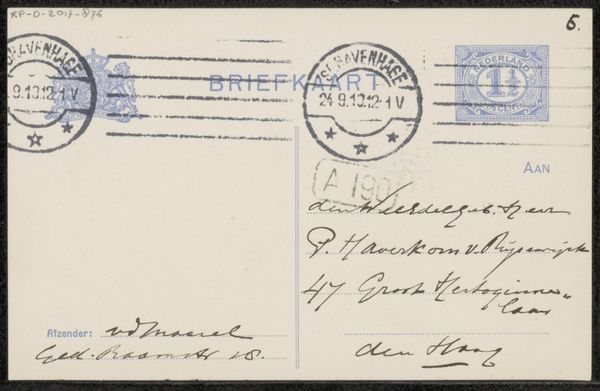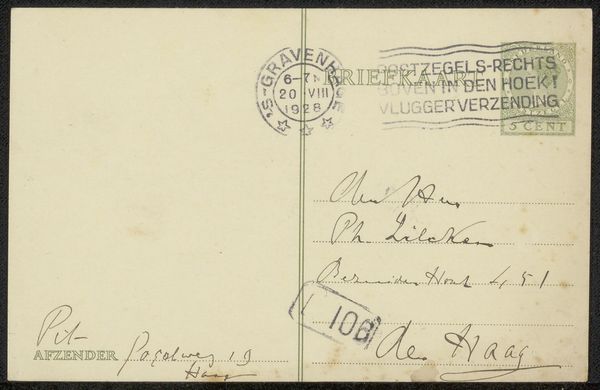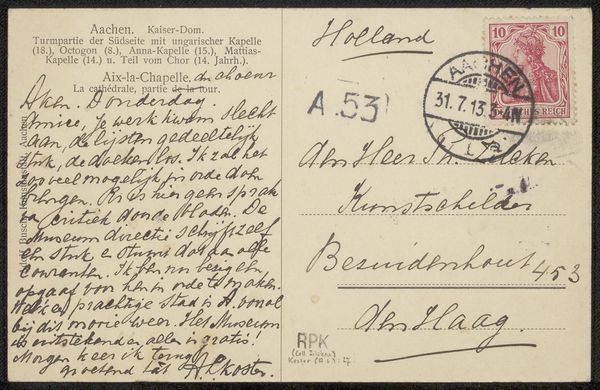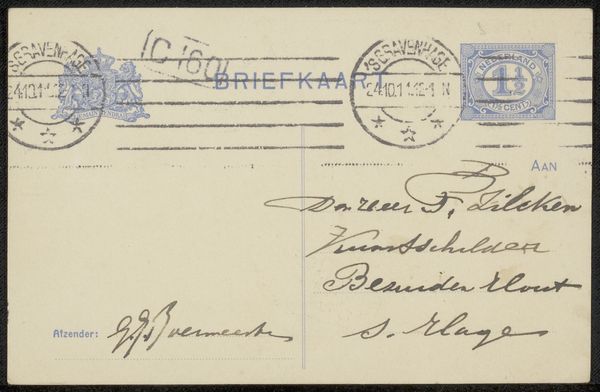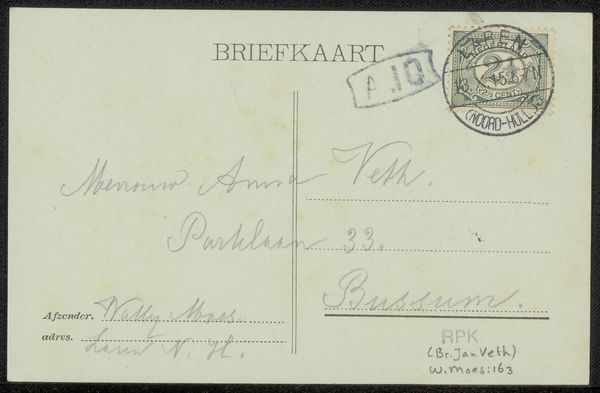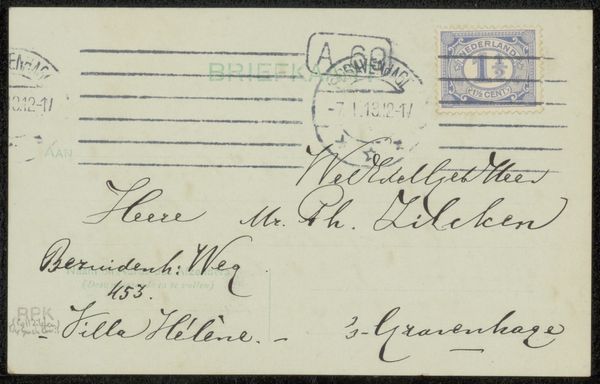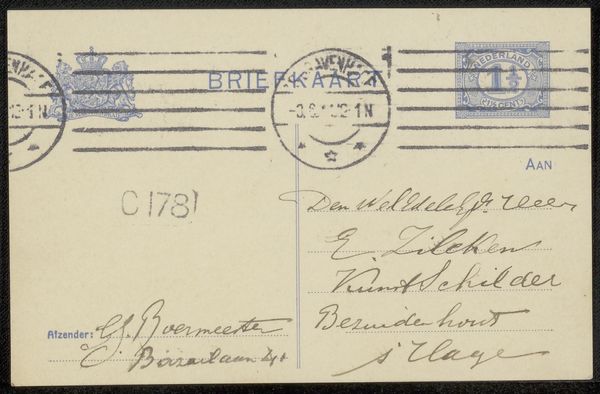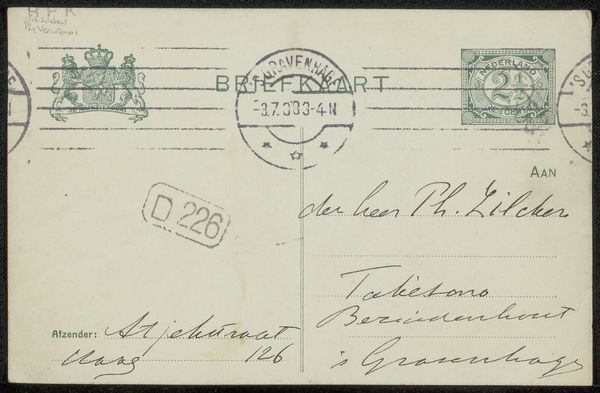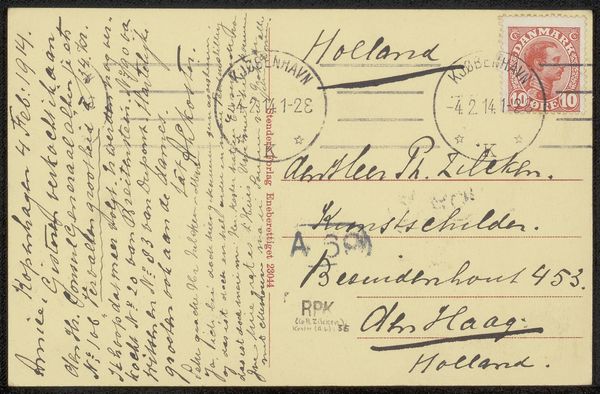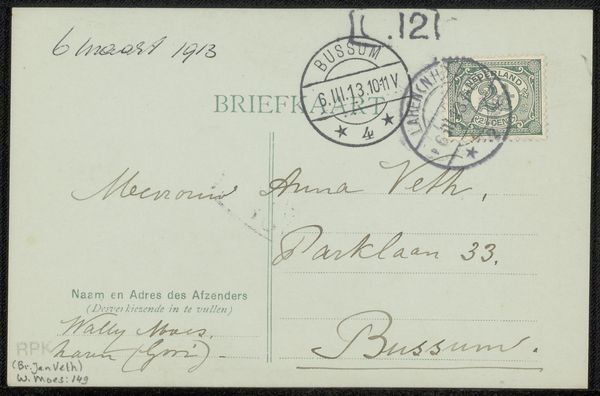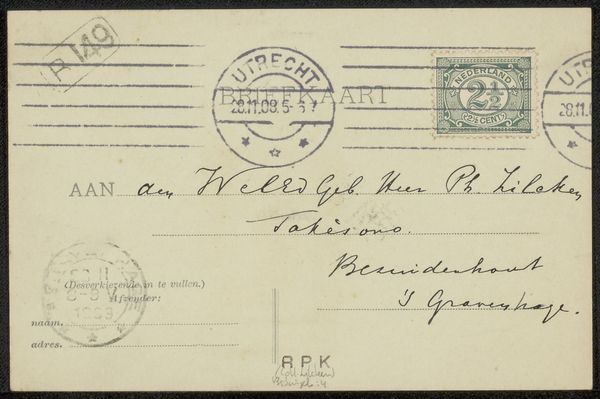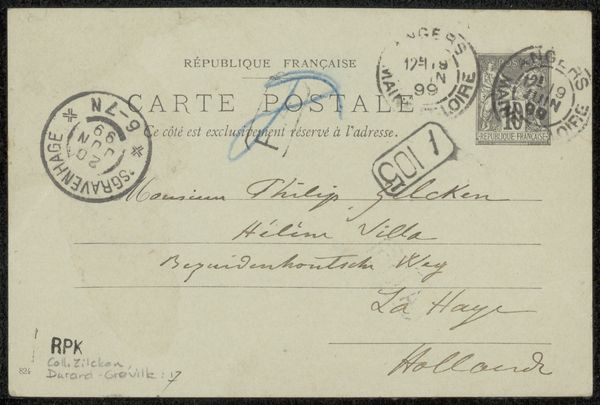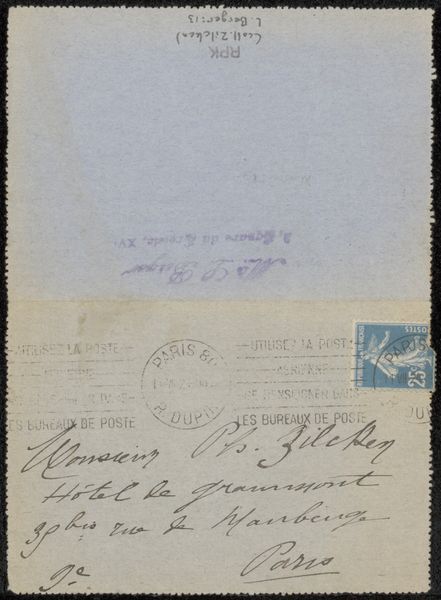
drawing, paper, ink
#
drawing
#
paper
#
ink
Copyright: Rijks Museum: Open Domain
Curator: This intriguing artifact is titled "Briefkaart aan jonkheer Hendrik Teding van Berkhout (1879-1969)", which translates to "Postcard to Jonkheer Hendrik Teding van Berkhout," attributed to Dolf van der Haar and likely dating to 1932. It is rendered in ink on paper. Editor: My first impression is a starkness, a bureaucratic echo from a bygone era. The formal typography juxtaposed with the fluid handwriting is quite compelling. It feels impersonal yet intimate, like a secret public record. Curator: Absolutely, the postcard becomes a vessel, conveying more than just a message; it carries cultural and institutional weight. The Dienst heading suggests official government correspondence, v.,O.K.,&W hinting perhaps at the department. It is clearly a relic of a specific hierarchical system, speaking volumes about the structures in place at the time. Editor: Looking at the production itself, I’m interested in the materiality— the types of ink available, the grade of paper. The formal printed typeface alongside handwritten annotations creates a curious contrast in labor. Were these mass-produced and personalized, or carefully drawn individually? Curator: A good question. It makes me consider what the very act of physically writing such correspondence meant then, the slower pace of communication and how the intended recipient would perceive this formality from someone like van der Haar. And, I wonder about Hendrik Teding van Berkhout's own position, what that name signifies in the historical landscape. The "Jonkheer" title implies nobility. Editor: And how did social class determine the availability and quality of tools and resources, even stationery, in 1930s Holland? The seemingly straightforward medium becomes imbued with social hierarchies when you start digging beneath the surface. Curator: Precisely. What seems like a mundane communication transforms into a rich signifier of its time. The postal stamp itself acts like an emblem or glyph sealing the document within a moment in time. Editor: It really highlights how even something ostensibly 'ephemeral' like a postcard can become a powerful record of materials, techniques, and social processes. Curator: Indeed, this object encapsulates a specific time, social, and administrative context, more than any photograph ever could. Editor: An important lesson in not underestimating the significance of the quotidian.
Comments
No comments
Be the first to comment and join the conversation on the ultimate creative platform.
